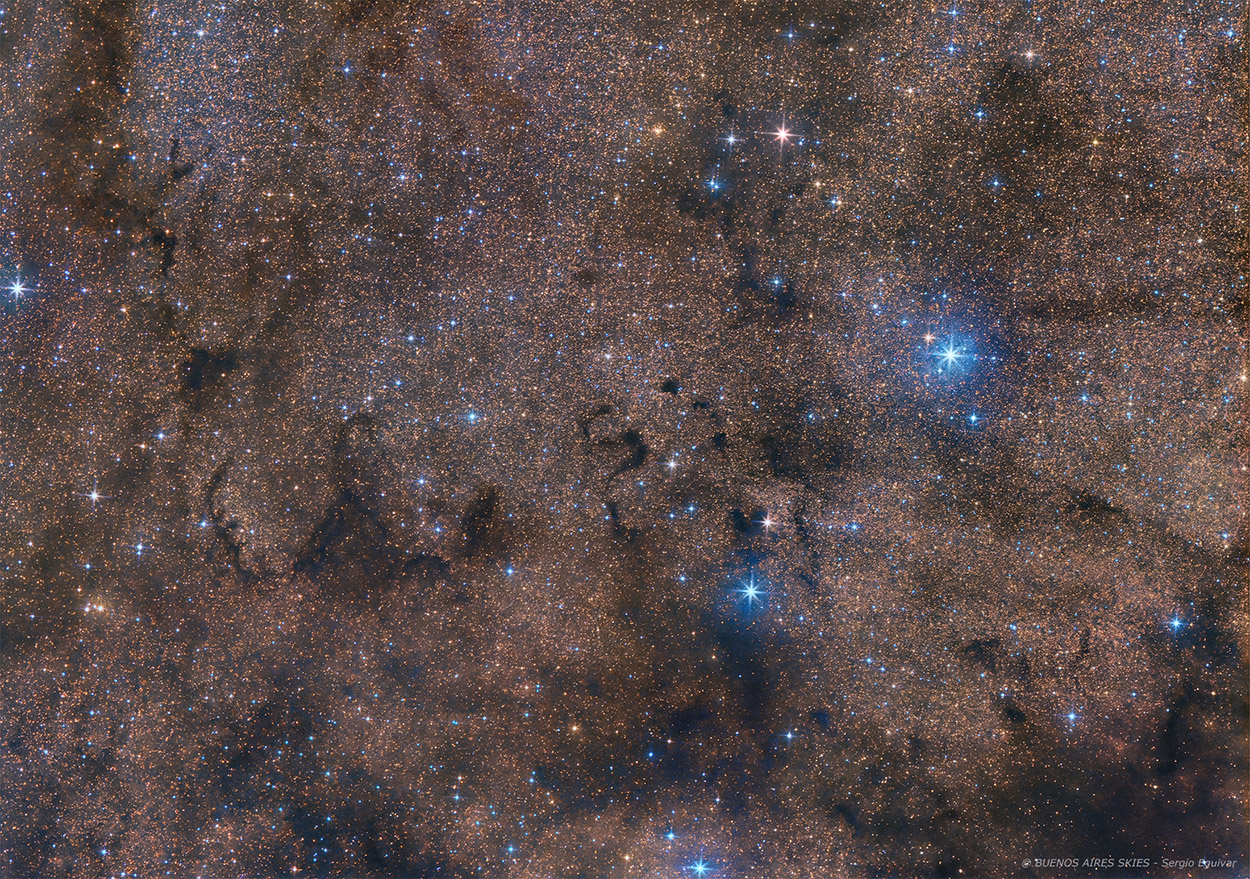
| HOME |
BARNARD 72 WIDE FIELD REGION
DARK NEBULAE IN OPHIUCHUS (THE SERPENT BEARER)
(Image centered at: ra 17 h:25 m / dec - 23º 39')
CLICK THE IMAGE FOR A HIGH RESOLUTION VIEW
May 2025, Home Backyard in Martinez, Buenos Aires, Argentina
DATA
TYPE: Dark Nebula Region
APPARENT DIAMETER: FOV approximately 6 x 4 degrees
APPARENT MAGNITUDE (V): n/a
DISTANCE: 650 light years
IMAGE INFORMATION
INSTRUMENT: CANON EF 200 mm f2,8 L lens stoped at 4,5
CAMERA: QSI 583 WS
MOUNT: Sky-Wacher EQ6 with SX Lodestar camera
FILTERS: BAADER LRGB Set
SKY CONDITIONS: urban skies - Bortle 8 with 3/4 Moon
EXPOSURES: LRGB (40,40,40,40)
OBJECT DESCRIPTION AND IMAGE SESSION
The image below is showing dark nebulae across a gorgeous dense area of stars toward the pronounceable constellation Ophiuchus which is close to the centre of our Milky Way Galaxy. The central "S-shaped" dark silhouette in the centre of the image is well known as the Snake Nebula. It is also listed as Barnard 72 (B72), one of 182 dark markings of the sky catalogued in the early 20th century by American astronomer Edward Emerson Barnard. Unlike bright emission nebulae and star clusters, Barnard's nebulae are interstellar dark clouds of obscuring gas and dust. Their shapes are visible in cosmic silhouette only because they lie in the foreground along the line of sight to rich star fields and glowing stellar nurseries near the plane of our Galaxy. Many of Barnard's dark nebulae are themselves likely sites of future star formation. Barnard 72 is a few light years across and about 650 light years away. (*)
(*) Free adaptation of NASA APOD essay.
BARNARD 72 WIDE FIELD REGION
ANNOTATED IMAGE